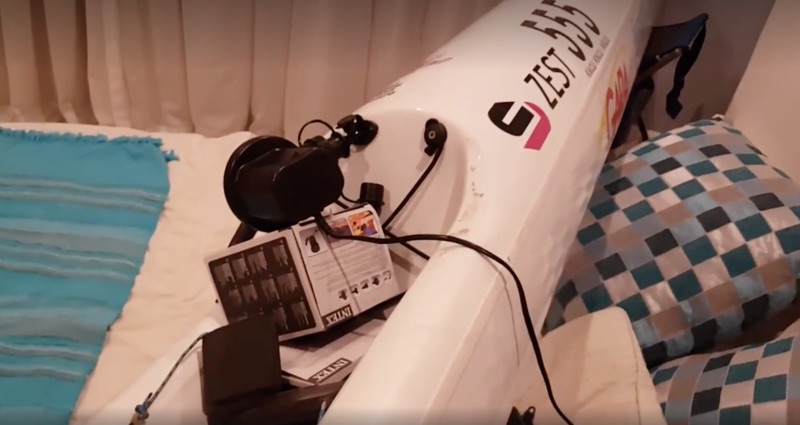Tech Tip: Drying out the inside of a Surfski Hull
 Getting the water out of a surfski hull ain't easy...
Getting the water out of a surfski hull ain't easy...
It’s inevitable: sooner or later your surfski’s hull WILL be punctured and it WILL take on salt water… and over time it’ll get heavier and heavier no matter how much you try and drain it. Here’s how to get that pesky moisture out of your surfski.
Heavier and heavier
A couple of months ago my beloved Swordfish S was involved in a collision; a friend (barely, still!) t-boned the back of my boat. The collision wasn’t major, but there was that horrid crunching sound that told of real damage.
We returned to shore immediately where we found that the impact had caused a minor split-seam situation along a 15cm length near the rudder. A small amount of salt water had entered the hull; just enough to make it damp. And damp it remains - and it's around 300g heavier than it was.
Hygroscopic
Salt is nasty stuff. It’s intensely hygroscopic, which means that it’s very difficult to dry out. Also, even if you leave your ski in the sun, although some of the moisture will evaporate, the salt will stay behind. Salt has a higher density than water, so if the leaks continue over time, the salt will build up and the ski will get heavier and heavier…
Rinse, Drain, Repeat
So how to get rid of it?
First of all, you want to get rid of the salt. If there’s any water in the boat, drain it out as much as possible via the bung hole.
Then rinse with fresh water – but take care!
Pour a litre or so of fresh water into the boat (easiest using a hose) and slosh it around inside the boat.
CAUTION: Don’t use too much water! – Water is heavy and if you use too much, you can generate enough force to separate the internal stringer from the deck; if this happens, the strength of the hull is severely compromised, requiring a major (expensive) repair.
Drain the water out of the bung hole and repeat several times.
The aim is to get as much of the salt as possible out of the hull.
Dry the Interior
Now you need to dry the inside of the hull.
You can try leaving the hull outside in the sun for a couple of hours with the bung hole pointing up; the hot air (containing moisture) will escape. But to really dry the hull out, you need to do more.
Sharon “downwind Queen” Armstrong of Durban, South Africa, found a practical solution for her ski. Durban is a humid, tropical city, so she took extreme measures:
“I put my boat in a confined room, with a heater and dehumidifier,” she said. “Then I got an electric mattress air filler and attached a tube from a drinking system to it and placed that tube inside the boat and put the air filler on.
“So, it is rotating dry air around inside the boat. It has finally lost 600 grams so far in a day and has dried out the whole inside.”

An inexpensive air pump...
What’s important is to try to work the tube as far into the hull as possible so that the air in the tips of the hull is shifted.
If you’re in a place that is not particularly humid, you can simply put the ski outside in the sun and run the pump there. Essentially, you’re looking to pump warm dry air throughout the hull to extract the moisture.

Getting rid of the moisture
CAUTION! Don’t seal up the bung hole! The air must be able to exit the ski freely! If you blow it up like a balloon, the deck will bulge and could detach from the stringer – leading to the aforementioned expensive damage!
Can't wait to try this myself - I'll report back on how much of that 300g I manage to get rid of!

